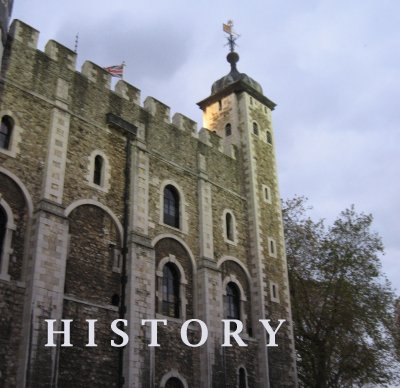
 |
Of course, history is everywhere in London. As Anna Quindlen observes in Imagined London:
| "London has the trick of making its past, its long indelible incredible past, always a part of its present. And for that reason it will always have meaning for the future, because of all it can teach about disaster, survival, and redemption. It is all there in the streets. It is all there in the books." |
But I've limited the photos in this category to specific historic structures or sites, both around the city and in two places in particular: the Houses of Parliament and the Tower of London, which each have their own page. On the current page I've included photos of miscellaneous historical importance. There are photos of historically interesting and important sites throughout the website, in particular in Statues and Memorials, Street Scenes, and Architecture. For more photos of general historical interest around London, take a look at this Flickr set. And, of course, I saw a lot of history on my travels around the U.K. and Europe, as well, particularly in the Scottish highlands and Edinburgh, Stonehenge, Avebury and Bath, and in Berlin and Italy. Family history was a highlight of trips to East Anglia.
Here is a map of London with historical sites marked:
View a larger version of this London history map here.
Beginning with the earliest phase of London's history as a city, here's a fragment of the Roman wall that enclosed the settlement of Londinium. This photo was taken as we strolled down the street aptly named London Wall, on the way to the Museum of London, which is less than a block away. Some other fragments are on the grounds of the Museum.

On the left below is Lambeth Palace, not as old as the Roman wall, but it's been around quite a while (since the 1300's). A more recent structure, familiar to fans of English mysteries and other literature, is the Old Bailey, shown on the right in a photo taken from our climb up St. Paul's dome.
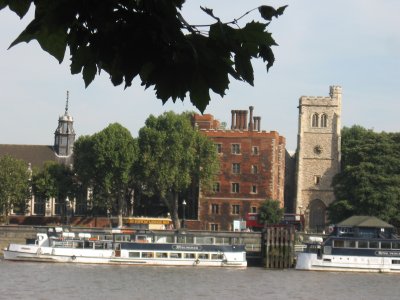 |
 |
Literature obviously looms large in London history, and it's easy to be a literary (and historical) tourist by noticing the blue plaques that note the residences of famous folks. As Anna Quindlen notes in Imagined London:
| "Nearly every block in the center of the city seems to have at least one of these small oval blue enamel plaques indentifying some great literary enterprise that has taken place within." |
On the left below is a plaque for one of the very biggest names in literature, T.S. Eliot. We saw this former residence of his on our walking tour of Kensington our first weekend in London. On the right is a residence of even more importance to me, a former home of my hero, Vera Brittain, at #2 Cheyne Walk. Hal and I specifically sought it out his first day in London. Why no blue plaque there, I wonder? Or might it be hidden by shrubbery? Surely there are rules about keeping them visible!
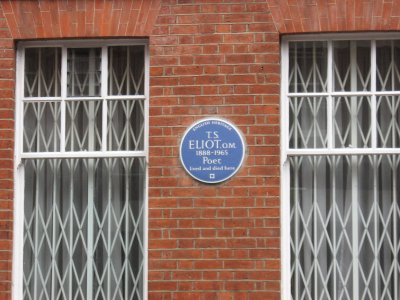 |
 |
The blue plaques aren't the only type of informational signs one encounters in London that deal with historical subjects. Here are two plaques noting important locations in the history of literature (Shakespeare's original Globe Theatre location) and religion (where John Wesley's "heart was strangely warmed," inspiring him to found Methodism). Below is a photo of the replica Globe, unfortunately not exactly on the original's site, but in the neighborhood. The photo was taken from the Millennium Bridge.
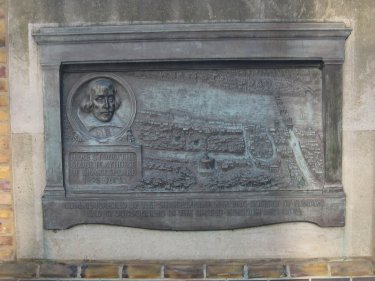 |
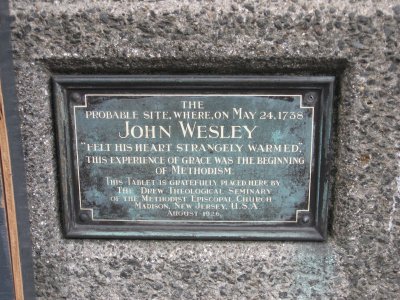 |
 |
|
Military history is almost as well-represented in London as literary history is. Here is a photo of the HMS Belfast, a World War II light cruiser that's been made into a museum. I didn't get around to touring the ship, but it's an unmistakable Thames landmark. Much more military history can be found on this page covering war museums.

Finally, a wonderful example of how history permeates even everyday chores like mailing letters when you're in London. The iconic red post boxes are marked with the initials of the monarch in power when they were constructed and I was pleased to find several VR's (for Victoria Regina) in the neighborhood around my office. Here's one:

In sum, history really is everywhere in London, as eloquently described by Anna Quindlen:
| "London upon London upon London, a city in which the destruction of the Blitz managed to unearth a section of the original Roman walls nearly two millennia after their construction. No novelist would use such a metaphor; reality is often more heavy-handed than we can afford to be " |
 |
Back to Dream Season home • Back to London home